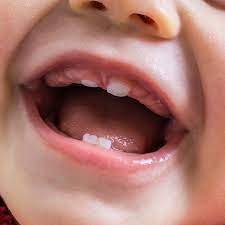From Fussiness to Drooling: Key Teething Symptoms to Watch For
The appearance of teeth in a baby is a normal part of infant development, in which their first set of teeth start to appear. It usually begins around 6 months of age, but it can start as early as 3 months or as late as 12 months. During this process, babies may experience discomfort, irritability, and drooling. Parents can help ease the process by providing teething toys, cold foods, and gentle massage. Please keep reading for details on the following topics:
Symptoms of teething
Ways to relieve teething discomforts

TEETHING
This is a natural process in which an infant’s first set of teeth, often referred to as “baby teeth” or “primary teeth,” begin to emerge through the gums. This typically occurs around 6 months of age, although it can start as early as 3 months or as late as 12 months. During teething, the baby’s gums may become swollen, red, and tender as the teeth push through. This process can cause discomfort and irritability for the baby, leading to symptoms such as increased drooling, fussiness, biting on objects, refusal to eat, and sometimes a mild increase in temperature.
SYMPTOMS OF TEETHING

Symptoms can vary from one baby to another, but some common signs that a baby is teething include:
- Fussiness: Babies may become more irritable than usual, crying more frequently and being harder to soothe.
- Soreness and swelling of the gums: The gums may appear red, swollen, and tender to the touch as the new teeth begin to push through.
- Biting of toys or fingers: Babies may instinctively try to relieve the discomfort by biting down on objects, such as teething toys or their own fingers.
- Refusal to eat and drink: Sore gums can make feeding uncomfortable for babies, leading them to reject breast or bottle feeding.
- Drooling: Excessive drooling is a common symptom of teething, as the baby’s salivary glands become more active in response to the teething process.
-
Mild increase in temperature: Some babies may experience a slight rise in body temperature, although teething typically does not cause fever above 100.4°F (38°C).
WAYS TO RELIEVE TEETHING DISCOMFORTS
Teething is an exciting but uncomfortable milestone for babies. As parents, it can be difficult to watch your baby suffer, but fortunately, there are ways to help them through this challenging time. There are several ways parents can help relieve their baby’s teething discomfort:
-
Gentle gum massage: Use clean fingers to gently massage the baby’s gums, which can help soothe soreness and provide temporary relief.
- Soft and chewy toys: Offer soft, rubbery teething toys for the baby to chew on. The pressure from gnawing on the toy can help alleviate pain and provide a distraction.
- Cold objects: Chilling teething toys in the refrigerator (not freezer) can provide additional relief by numbing the gums. Avoid freezing toys as they may become too hard and cause injury to the baby’s delicate gums.
- Cold foods: Offer cold, but not frozen, foods such as chilled fruit slices (e.g., banana or cucumber) or yogurt to help soothe sore gums. Ensure foods are age-appropriate and cut into small, safe pieces to prevent choking hazards.
- Pain-relieving medication: Consult with a pediatrician about using over-the-counter pain relievers such as infant acetaminophen or ibuprofen to help alleviate discomfort. Follow the recommended dosage and use only as directed by the healthcare provider.
- Provide silicone teething rings or pacifiers for the baby to suck on. The sucking action can help relieve pressure on the gums and provide comfort.
- Distraction: Engage the baby in activities or playtime to divert their attention away from teething discomfort. Singing, cuddling, or going for a walk can help distract the baby and provide comfort.
-
Comfort measures: Offer extra cuddles, hugs, and soothing words to reassure the baby during this uncomfortable phase. Providing a calm and supportive environment can help ease their distress.
It’s important to monitor the baby closely for signs of discomfort and adjust the relief measures as needed. Additionally, always ensure that any teething products or foods offered to the baby are safe, age-appropriate, and free from choking hazards. If teething discomfort persists or worsens, or if the baby develops other symptoms, consult with a healthcare professional for further evaluation and guidance.
Disclaimer: The information provided in this content is for general informational purposes only. It is not intended as medical or healthcare advice, diagnosis, or treatment. Always seek the advice of a qualified healthcare professional with any questions you may have regarding a medical condition or healthcare decisions.

